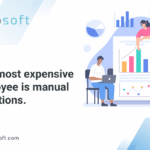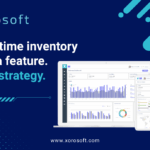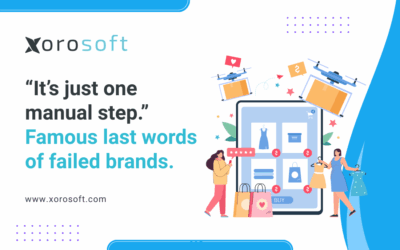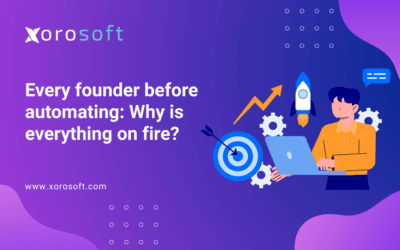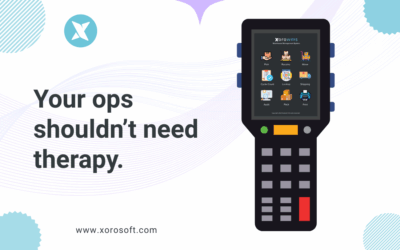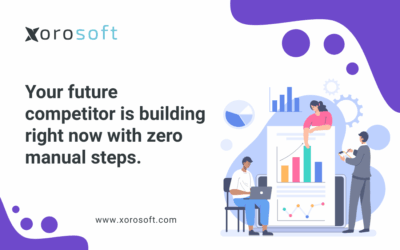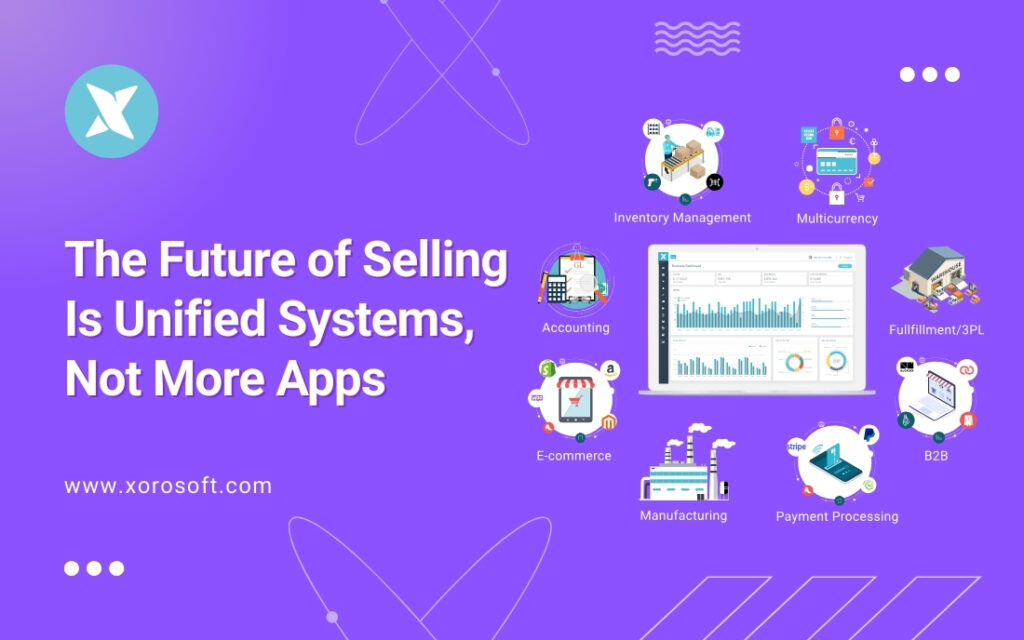
Why Scaling Businesses Are Choosing a Centralized ERP Solution
Every fast-growing business eventually hits a wall. Although sales are up and SKUs are expanding, the lack of a centralized ERP solution quickly turns warehouse operations into chaos.
You’ve got Shopify orders coming in, a third-party shipping app managing labels, QuickBooks handling accounting, and spreadsheets trying to track inventory in real time. However, none of these are built to scale together.
This is exactly where a centralized ERP solution becomes critical.
It’s the digital equivalent of duct-taping your tech stack—and it works… until it doesn’t.
Because as you scale, every disconnected system becomes a potential failure point.
One delay. Then a sync error. Followed by a lost order. Eventually, your customer loyalty takes a hit.
The truth? Growth doesn’t break your systems. Your systems break your growth.
The Cost of Managing Sales Without a Centralized ERP Solution
The marketplace moves fast—and your backend needs to keep up. But here’s what’s happening behind the curtain at many scaling brands:
-
Inventory is off by 10–20%, even though you “just updated the spreadsheet.”
-
Order fulfillment lags, and customers are left asking, “Where’s my package?”
-
Accountants scramble at month’s end, reconciling numbers between Shopify, Stripe, and QuickBooks.
-
Warehouse staff use Post-its to make sure the right bin gets picked.
-
Customer service teams spend hours correcting fulfillment mistakes that tech should’ve prevented.
Of course, the problem isn’t your people. It’s your process—and the duct-taped tech stack built for a company half your size.
Every new app seems like a solution:
“It’ll automate fulfillment.”
“You can use it to track returns.”
“Supposedly, it also handles B2B orders.”
But in reality, more apps = more friction. Moreover, that leads to more sync delays. More logins. More vendor issues. More IT overhead.
What you really need isn’t another app.
It’s a centralized ERP solution that can handle all of it.
Why Do Disconnected Systems Always Fail at Scale?
Most businesses start with tools that “just get the job done.” Initially, this might be fine. However, once complexity enters the picture, those tools can’t keep up.
The real breakdown happens because of:
-
No shared data layer: Inventory, orders, and accounting live in separate silos. Therefore, there’s no single source of truth.
-
Sync delays: Shopify might push updates every 15 minutes—but that’s enough time to sell what you no longer have.
-
Manual workflows: Your staff becomes the “middleware,” copying info from one system to another. Consequently, human errors multiply.
-
App fatigue: Too many dashboards. Too many APIs. Too many bills. And worst of all—no clear visibility.
As a result, operational bottlenecks pile up. You face overstock, stockouts, missed orders, inaccurate reports, and burned-out teams.
In other words, your team is working harder to fix what your systems should prevent.
Why You Need a Centralized ERP Solution (Not Another Plugin)
You don’t need 15 different tools. Instead, you need A centralized ERP solution that connects every part of your business. It becomes your single source of truth. That’s the platform you need to scale without chaos.
This isn’t just about tools—it’s about operational clarity.
A modern ERP doesn’t just replace accounting software or inventory apps. Rather, it replaces chaos with control:
-
Real-time inventory tracking across all warehouses and channels.
-
Built-in WMS that controls bin locations, barcode scanning, and fulfillment accuracy.
-
Integrated accounting, so your financial reports reflect live operational data.
-
Automated procurement that triggers when stock runs low.
-
Team-wide visibility, so sales, ops, finance, and warehouse teams stay aligned.
Furthermore, you get one source of truth for decision-making, which allows your teams to move faster and with more confidence.
Equally important, a centralized system minimizes human error while speeding up order-to-cash cycles.
Why Xorosoft Is the Centralized ERP Solution Businesses Rely On
Most ERP platforms come with one of two problems:
-
They take 12–18 months to implement, which drains teams and budgets.
-
They don’t work natively with eCommerce, WMS, or real-world workflows.
That’s where Xorosoft ERP breaks the mold.
Here’s why retailers, manufacturers, and distributors are switching:
-
Cloud-native and fast to deploy
-
Built-in WMS, not a bolted-on third-party app
-
Seamless Shopify integration for real-time order syncing
-
Live connection to Amazon, 3PLs, EDI, and marketplaces
-
Robust multi-location, multi-currency, and multi-channel support
-
Hundreds of API integrations so you can scale without switching platforms again
🎖️ Ranked #1 in Ease of Use on G2: https://www.g2.com/categories/erp-systems?rank=1&tab=easiest_to_use#rank-1
🛒 Available on the Shopify App Store as a fully integrated ERP: https://apps.shopify.com/xorosoft-erp
With this in mind, Xorosoft is more than an ERP—it’s a system that future-proofs your operations.
In comparison to traditional ERPs, it’s agile, intuitive, and tailor-made for multi-channel commerce.
